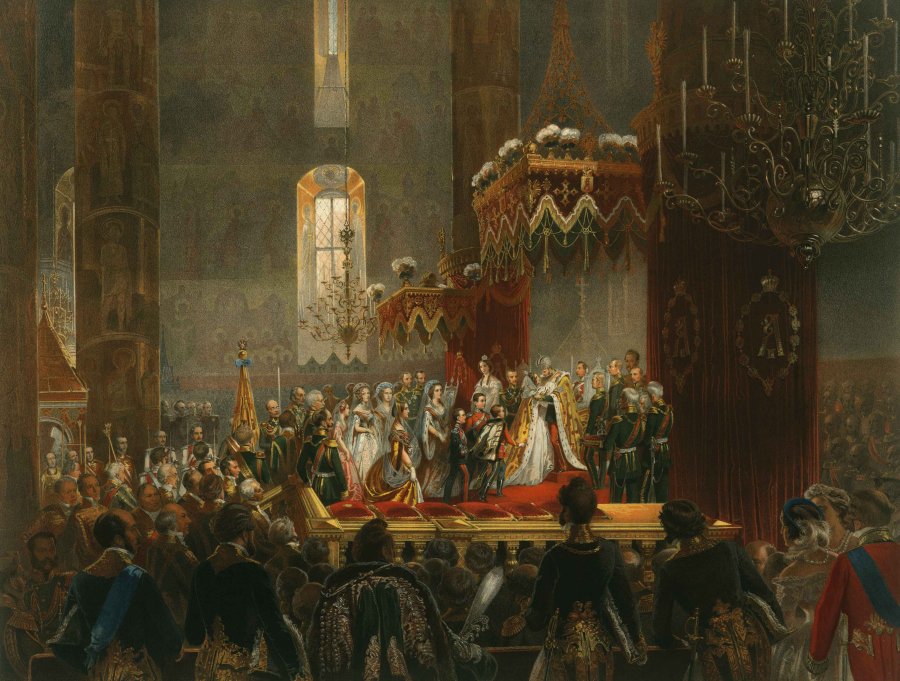
The coronation of Tsar Alexander II (1818-1881) and his consort, Empress Maria Alexandrovna (1824-1880) took place on September 7 (August 26, Old Style), 1856 at the Assumption Cathedral of the Moscow Kremlin.
Figure 8.1. Mihály Zichy, Homage from the Imperial Family to Alexander II, 1856, chromolithograph, Coronation Book of Alexander II, source: Wikimedia Commons.
Empress Maria Alexandrovna’s coronation ensemble
The dress
Maria Alexandrovna was the third Russian Empress to don the national court costume for her coronation in 1856, by which time this outfit had already undergone numerous changes.
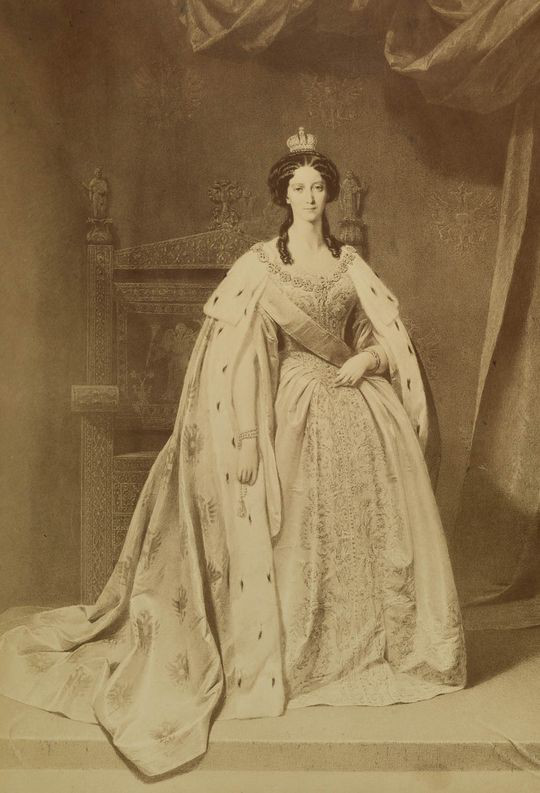
In 1834, Tsar Nicholas I, Maria Alexandrovna’s father-in-law, had promulgated a decree that required the women of the Russian court to wear uniforms based on ethnic or folk costumes. Initially, this style of court gown consisted of a caftan-like garment having a long train that was worn over another gown; in fact, Empress Catherine II had introduced such an outfit nearly sixty years earlier.
However, according to Nicholas I’s edict, the under-dress of the ensemble was to be made of embroidered white silk, with buttons running down its centre, whereas Catherine II had permitted the use of under-gowns that incorporated the eighteenth-century western fashion of the wide skirt supported by panniers or side hoops, without restrictions as to colour, fabric or decoration. European trends and silhouettes had continued to dictate the appearance of the under-dress of Russian court gowns between the reigns of Catherine II and Nicholas I, as can seen from Elizabeth Alexeyevna’s and Alexandra Feodorovna’s coronation garb.
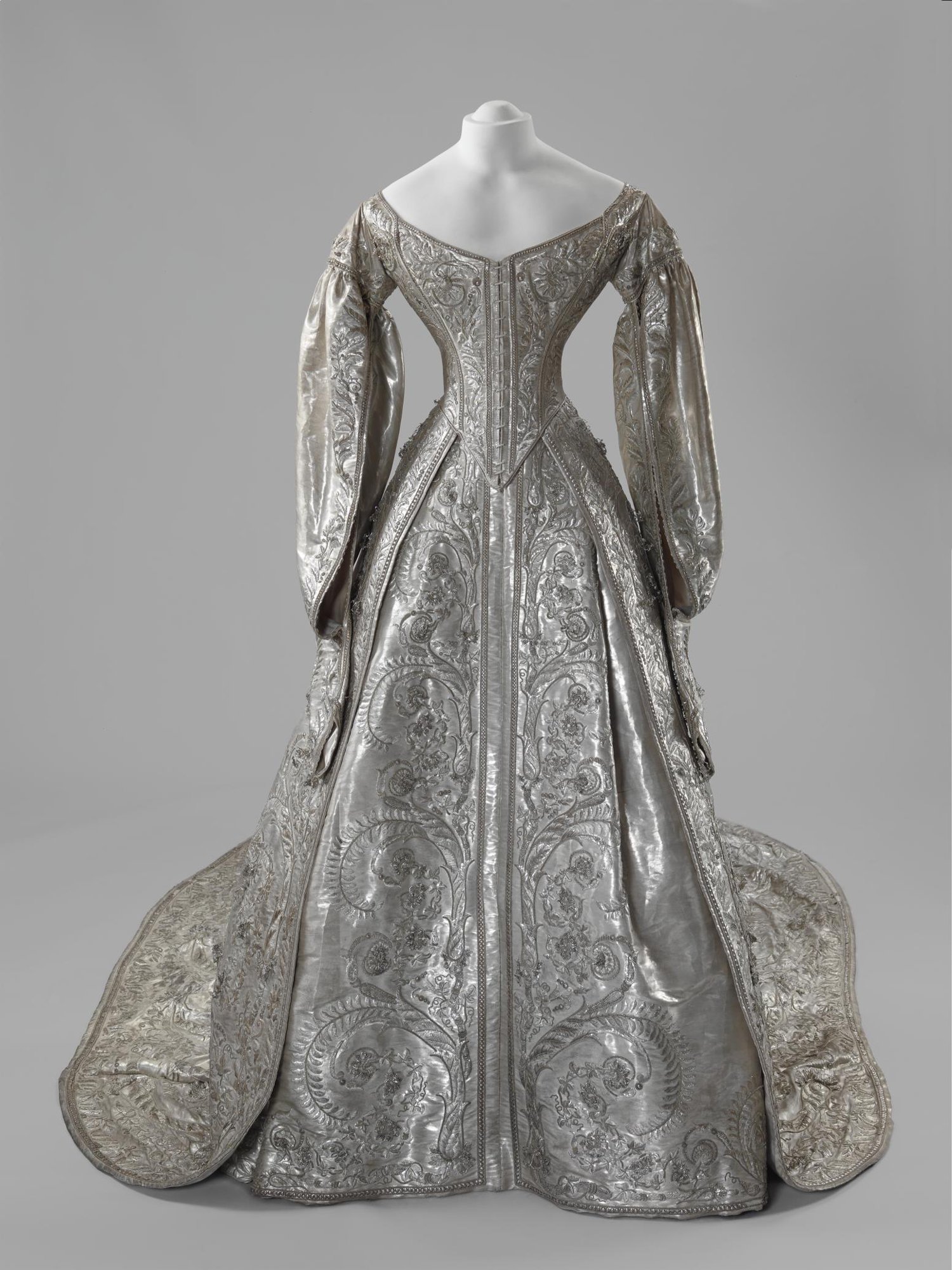
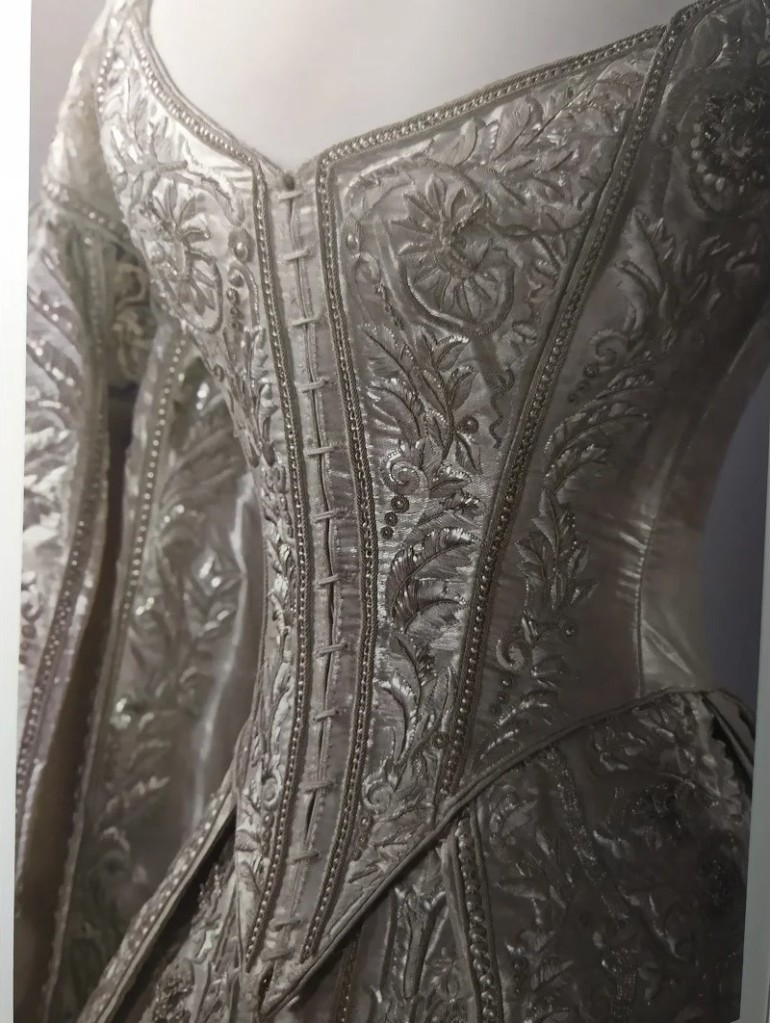
Thus, in response to the bewildering array of French-inspired fashions that passed for Russian court dress, Nicholas I issued a meticulous set of instructions regarding colour, type of cloth, decoration and length of train for the Empress, the ladies of the Imperial family and the women in their service. In concession to the European fashions of the time, each lady was expected to wear a boned bodice with short puffed sleeves over a bell-shaped skirt. Over this she donned a floor-length jacket or over-dress that extended itself into a train of a length that was appropriate to her position at court—protocol demanded that the Empress wear the longest train of all, measuring up to fifteen feet. This jacket had very long sleeves that split at the shoulder, allowing the sleeves of the bodice underneath to peep through, and exposed much of the heavily-embroidered under-dress. The over-garment could be of any colour or fabric (brocade, velvet, silk) and was embellished with a variety of materials and embroidered motifs, except in the case of ladies-in-waiting and maids-of-honour, whose outfits were carefully detailed in a series of illustrations that accompanied the Tsar’s edict.
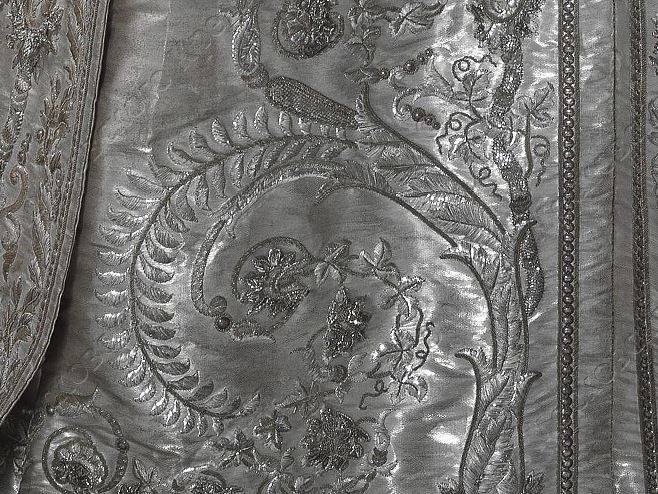
In the 1840s, the Russian court gown underwent further modifications. The floor-length jacket disappeared and the long, dangling Russian sleeves were sewn directly onto the bodice, a few inches below the drooping shoulders. Tiny puffed white sleeves or lace trim, hardly visible through the gap in the false sleeves, replaced the balloon sleeves of the 1830s bodice. A separate train, fastened at the waist, split open from underneath the bodice to reveal the skirt, in the manner of Western court dresses of this era. The skirt, as before, was of embroidered white silk and matched the front panels of the bodice in material and decoration. This three-part ensemble created the illusion of a court gown that had its roots in the flowing Russian peasant dress, but was in fact in line with contemporary European fashions.
As figures 8.3 and 8.5 show, Maria Alexandrovna wore such a three-piece gown for her 1856 coronation, with the exception that her garments were made entirely of cloth-of-silver, like those worn by her predecessors at their coronations. Motifs of flowers, curling fern leaves and ivy leaves and their tendrils, embroidered in silver metal thread (figure 8.4), cover much of the exposed area of her ensemble. The prohibitively expensive fabric of her dress and the length of her train (nearly ten-and-a-half feet, longer than the nine-foot trains permitted to members of the Imperial family) would have set her apart from other women present, even if they were also attired in the Russian court costume.
An inch-wide strip of fabric embellished with jewelled buttons, which took her décolletage at its starting point and ran down the length of her bodice and the skirt, would have concealed the bodice’s front-lacing closure (see figure 8.3) from view. Additionally, her gown has the hoop or crinoline skirt then in vogue, as a print depicting her in coronation robes with a voluminous bell-shaped skirt (figure 8.2) indicates.
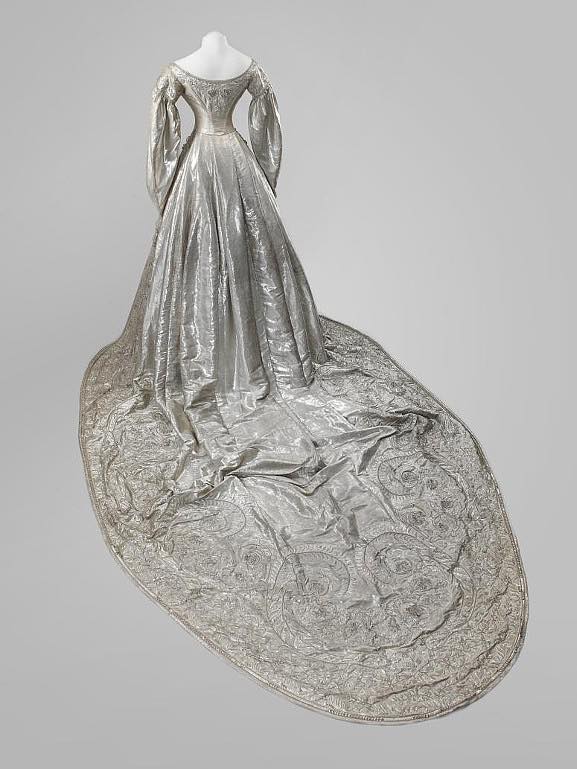
The mantle
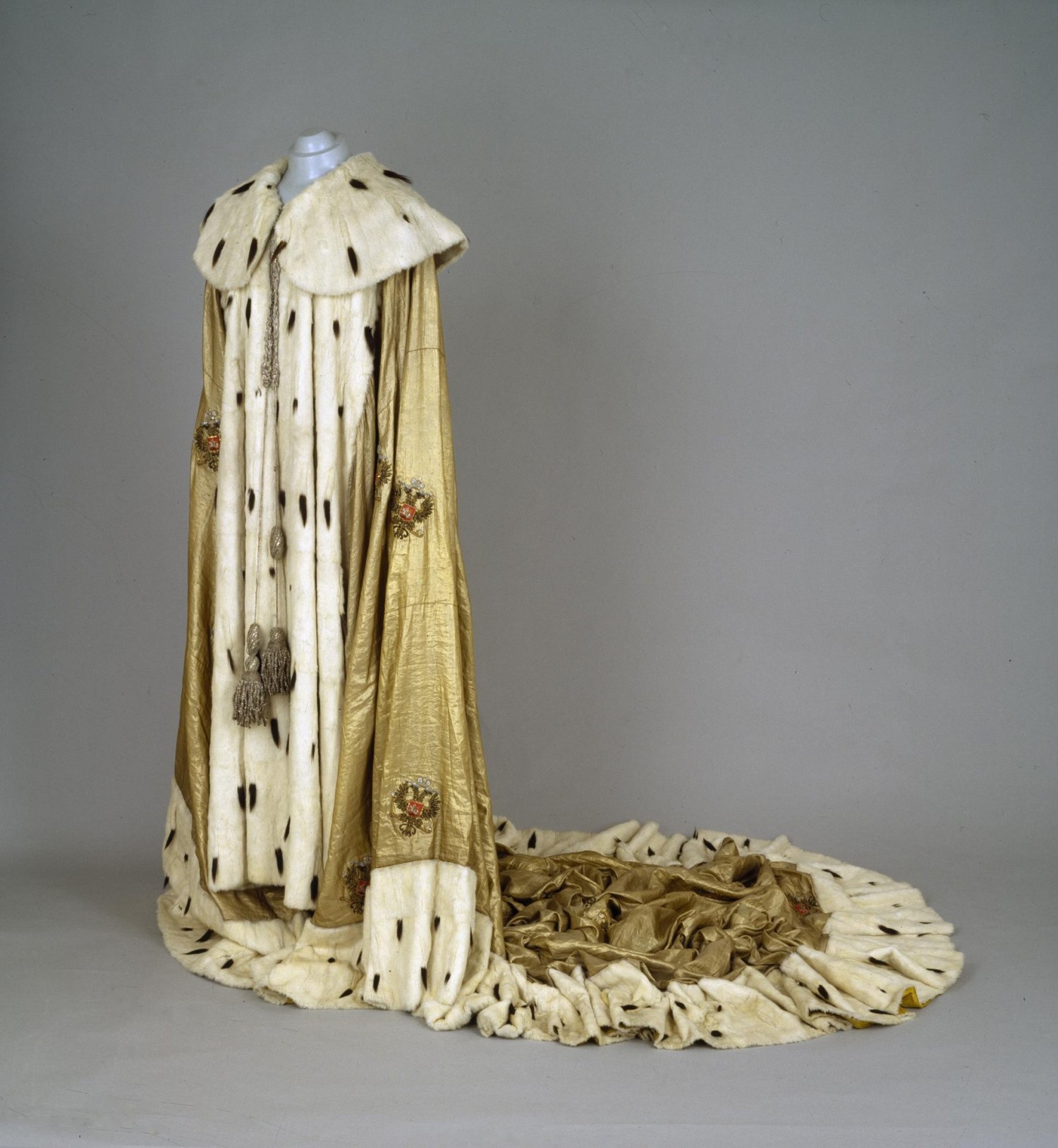
Bibliography
Borderiu, Ksenia. Plat’ye imperatritsy. Yekaterina II i yevropeyskiy kostyum v Rossiyskoy imperii. Moscow: Novoe literaturnoe obozrenie, 2016.
King, Greg. The Court of the Last Tsar: Pomp, Power, and Pageantry in the Reign of Nicholas II. Hoboken: Wiley, 2006. Internet Archive.
Nicholson, Nick. “Putting on the Armor: Women’s Court Costume and Positions in Imperial Russia.” Alexander Palace Time Machine, accessed March 12, 2022. https://www.alexanderpalace.org/palace/ctCostume.php.